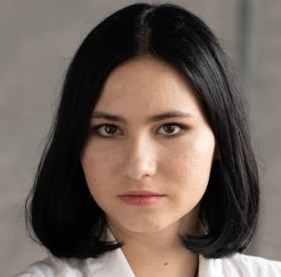Lava cave, space debris and ancient Greek hydra... RUDN University architecture students conquer space
Young Architects Competitions (Bologna, Italy) and the European Space Agency have announced a competition of ideas aimed at creating the first research station on the Moon, where more than 200 teams from all over the world participated.
RUDN University was represented at the competition by students of the Engineering Academy:
- Anastasia Ivanova — “Design of the Architectural Environment”, 4th year;
- Henry Bartels — “Design of the Architectural Environment”, 4th year;
- Irina Kozlova — “Design of the Architectural Environment”, 4th year;
- Anna Filimonova — “Design of the Architectural Environment”, 4th year;
- Maria Dolbischeva - “Design of the Architectural Environment”, 4th year;
- Gera Onoprienko — “Design of the Architectural Environment”, 4th year;
- Margarita Bulgakova — “Architecture”, 3rd year;
- Alisa Rozenkova — “Architecture”, 3rd year;
- Valeria Titova — “Architecture”, 3rd year;
- Kerim Khaidarov — “Architecture”, 2rd year.
Supervised by Egor Orlov, senior lecturer at RUDN Academy of Engineering, member of the UAR (Union of Architects of Russia), the IBOB+ student team (Ivanova, Bartels, Orlov, Bulgakova+Partners) developed three types of habitable modules — mobile mechanized modules, soft modules and observatory. Interacting with each other, they ensure the station functioning.
The main mission of the project is to recycle space debris (satellites, launch vehicle stages) into construction material for lunar station structures, which are assembled in low-Earth orbit and then sent to the Moon.
"The architectural competition is like a spaceship race! The main thing is the choice of project. It should be exciting and unexpected. In other words, an architectural project is a solution to a pressing challenge for which existing approaches and methods do not work. Therefore, for our project we chose space debris, which is like a metal blanket in the sky. Soon it will become impassable, and we won’t be able to launch new ships. As a solution, we proposed building a base from the Earth’s orbit debris on the surface of the Moon. This ecological approach is our message to extra-terrestrial civilizations — we are responsible for our planet!" — Egor Orlov.
Using metal structures obtained by recycling space debris, the team proposed to erect a power frame at the site of the station under the surface of the Moon. These are the static lines of the complex, while also there is also a system of movable modules. This provides flexibility of the station operation. At the base of the central line there is an observatory module, responsible for the exploration of outer space, as well as the study of the Earth. In addition to research, the module has public space for people to gather for various events.
“Usually an architectural project begins with an image and a concept. However, a research station project, due to the complexity of space conditions, began with the search for fundamentally new engineering solutions. Engineering aesthetics also became an integral part of the architecture of the base. We tried to critically evaluate emerging ideas and concepts. We wanted to create not an abstract architectural fantasy, but rather a set of realistic solutions to be implemented in the near,” Henry Bartels.
The shape of the lunar station resembles a hydra, a mythical ancient Greek creature. Its main ability is to regenerate severed heads, when two new ones instantly appear in the place of one. We employed this image to easily repair soft modules connected to hard modules representing the solid body of the hydra.

“It was not an easy project, but we did it flawlessly! In my opinion, it is proof that even students are capable of conquering outer space!” — Anastasia Ivanova.
“The project was an interesting experience that allowed us to expand our knowledge in the field of astrophysics. We have created a unique structure that allows staying and doing research in conditions unusual for humans,” Margarita Bulgakova.
The jury comprised representatives of the world’s largest architectural bureaus: Foster+Partners, BIG and SOM. The main evaluation criteria were the following:
- long-term solution to the station design, to be used for future space travel;
- use of non-standard technological solutions;
- creating space for a person’s comfortable stay.
For reference:
Official website of the contest with published works: www.youngarchitectscompetitions.com
Photo courtesy of Henry Bartels
In honor of the 65th anniversary of the Peoples' Friendship University of Russia named after Patrice Lumumba, the Digital Pre-University Faculty gives a unique opportunity to RUDN foreign alumni to communicate in Russian and their family members to study Russian together with the best professors of RUDN.
The new list of federal innovation platforms (FIP) of the Russian Federation includes 30 new organisations. Among them is Peoples' Friendship University of Russia named after Patrice Lumumba. This became possible thanks to the development of the Digital Pre-University Faculty of RUDN.
December 15, Minsk hosted the IX International Student Olympiad in Human Anatomy. It was attended by 9 teams from Russia and Belarus. Students of RUDN took two 3rd places in the theoretical and practical rounds.



